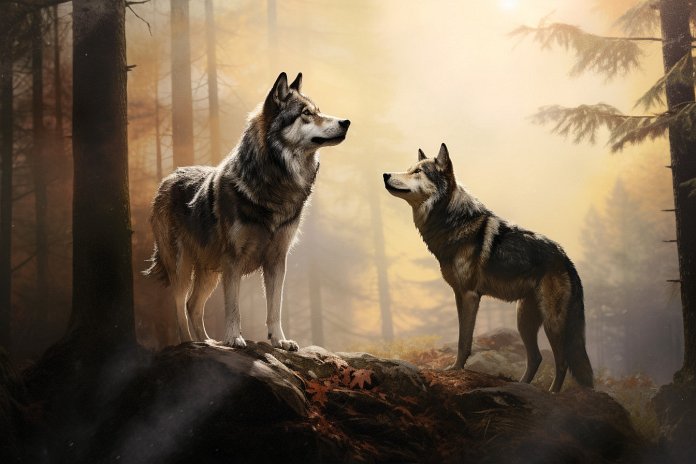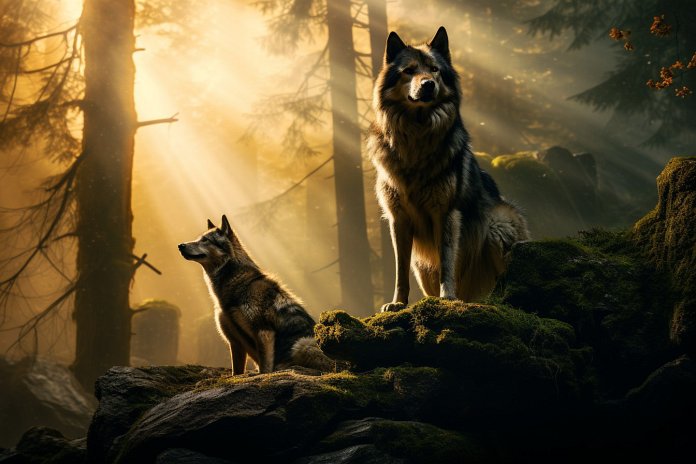
The majestic wolf, ancestor of our companion dogs, has a fascinating history. Dogs have been bred for centuries to be friendly and domesticated, but there are still wolf-like traits in some breeds. Wolf-dogs are the result of mating wolves with dogs, and their characteristics can vary depending on the dog breed. They may exhibit behaviors such as growling, barking, digging, chewing, howling, head bobbing, and showing exposed teeth. However, they can also display more wolf-like traits such as a high prey drive, aggression, nipping, mouthing, and cunning behavior. Wolf-dogs have a long history, with evidence of interbreeding dating back thousands of years. The science behind wolf-dogs has shed light on the intelligence and abilities of dogs, but there are debates about the ethics and legality of breeding wolf-dogs. Training a wolf-dog can be challenging, and high-content hybrids require special care and socialization. Safety tips for owning a wolf-dog include never leaving them alone with small children, keeping them leashed in public, socializing them from a young age, doing thorough research on the breed, seeking professional training advice, checking the legality of owning a wolf-dog in your state, and being aware of their strong prey drive.
“Embracing the wild beauty of wolf-dogs comes with great responsibility and caution.”

Tips & Things to Know
1️⃣ When owning a wolf-dog, it is important to never leave them alone with a baby or small children. Their wild instincts and high prey-drive could pose a danger to young ones.
2️⃣ Keep your wolf-dog leashed when in public to ensure their safety and the safety of others. Their unpredictable behavior and potential to be aggressive make it necessary to have them under control at all times.
3️⃣ Socialize your wolf-dog puppy early on to help them adapt to different environments and interact positively with other dogs and people. This will reduce the risk of aggressive behavior and make them more manageable as they grow older.
Frequently Asked Questions, Answered ✅
1. Can wolves and dogs mate with each other?
– Yes, wolves and dogs are inter-fertile and can mate freely with each other.
2. What are the signs that a wolf-dog might have similar traits to a dog?
– Signs that a wolf-dog might have similar traits to a dog include growling, barking, digging, chewing, howling, head bobbing, and exposed teeth.
3. What are the signs that a wolf-dog might have characteristics of a wolf?
– Signs that a wolf-dog might have characteristics of a wolf include high prey drive, aggression, nipping, mouthing, and cunning behavior.
4. What is the history of wolf-dogs?
– The breeding of wolf-dogs dates back thousands of years, with evidence of interbreeding between wolves and dogs found in ancient civilizations such as Siberia and Mexico. German Shepherds and the Saarloos Wolfhound are examples of breeds with wolf-dog influence.
5. How should wolf-dogs be trained and what safety precautions should be taken?
– Training a wolf-dog depends on the amount of wolf content they have, with mid to low hybrids being trainable like domesticated dogs. High content hybrids require early socialization, positive reinforcement training, and leashing at all times. Safety tips for owning a wolf-dog include not leaving them alone with small children, keeping them leashed in public, and researching legal requirements in your state.